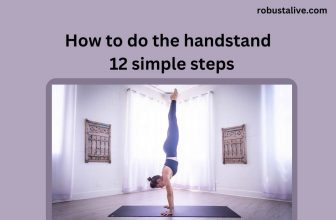The 5 Potentially Dangerous Yoga Poses That Often Lead To Injury
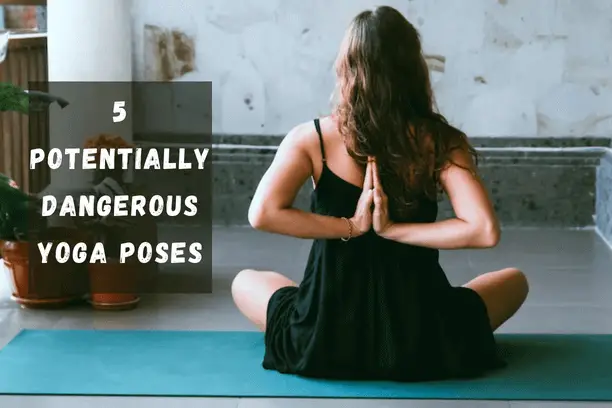
Over 30 million people worldwide reportedly practice yoga regularly. And among the 14 million, those are Americans who have been recommended yoga by a doctor or other healthcare professional. People have performed yoga for countless years. Since then, the practice has built a solid reputation for encouraging physical and mental wellness. Yet, many yogis might need to be aware that several frequently instructed yoga poses might also be dangerous. Injury risk is incredibly high for yogis. So, are yoga’s therapeutic advantages worth the risk?
An increasing number of injuries associated with yoga are occurring in Australia, according to Ann Marie Johnston, a yoga instructor and the creator and CEO of YogaMate and the yoga safety platform Yoga Therapeutics Pro. She advises beginners to find a new teacher if their current one tells them to push through the pain or makes them feel uncomfortable. Your teacher is there to safely guide your practice, not to cause you harm.
Yoga injuries, such as backaches, cracked ribs, and cramped necks, are not necessarily uncommon, especially among beginners who push themselves excessively. Yoga techniques like handstands, inversions, and backbends may qualify as moderate exercise, but if you’re not ready for them, more challenging poses can cause physical injuries. That being said, we will discuss five of these difficult yoga techniques below.
Five Dangerous Yoga Poses You Should Look Out For
-
Headstand
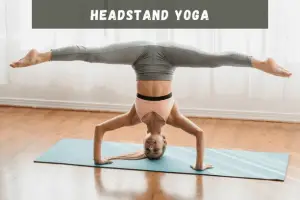
Although the headstand is praised for its significant benefits in yoga classes, several concerns are involved with this technique. Anyone who has a sensitive neck should avoid it. Before incorporating this posture into your repertory, discussing any neck injuries, you may have had with your doctor is imperative.
According to chiropractor and yoga instructor Dr. Eden Goldman, doing a headstand posture requires a strong upper body and lots of yoga practice. Your upper back, chest, shoulder, and forearms should be able to bear your weight. You risk injuring your cervical spine if they aren’t powerful enough to maintain yourself in the position.
How to do it safely
Avoid rising suddenly, and grab a wall when necessary to prevent falling. To prevent a shoulder injury, ensure that elbows are placed beneath your shoulders and that your forearms enclose your face. To avoid injuring your back, tighten your abdominal muscles and clutch your ribs.
-
Handstand

The main issue with the handstand pose is to kick up while keeping the arm straight and generating enough force to perform it. This is the basic fundamental of this pose. There are several videos online of handstand pose going wrong where yogis got their arms snapped. You can even injure your hamstring as a beginner yoga practitioner if you try to force yourself into this pose. You might even get injured by falling because staying balanced in this pose is tough.
Also Read: How to Do The Handstand – 12 Simple Steps
How to do it safely
When practicing for the first time, use a wall to balance yourself. Place one foot on the wall and the other behind you and focus on generating energy to kick up the feet to make an L shape. Stay in the pose, maintain balance, and join your legs when you have complete control. As you kick up, keep the arms straight and do not bend them; maintain a firm footing.
-
Shoulder Stand
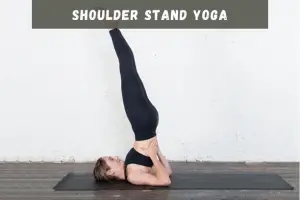
Your spine and neck could suffer if you approach your shoulder stand carelessly. Our bodies are not used to being in such postures, and this pose is already unbalanced for your body. Beginners should only attempt this yoga pose. Even yoga specialists avoid teaching this pose because of its intensity.
How to do it safely
Before attempting a position like a shoulder stand, always loosen up your muscles. If these places are stiff, you can experience discomfort or, worse yet, injury. Before beginning, you should also check that your alignment is correct. When ready, make your way to the legs in the air, the wall stance. Stretch your toes back toward your face while extending your legs up into the air. Your palms should be firmly planted on your mat while you position your arms at your sides.
-
The Camel Pose

In the camel pose, your spine will be bent and experience a complete cycle of intense motions. This technique can be dangerous if you have back issues, spinal problems, or arthritis. Due to the pose’s active use of the knee, shoulder, spinal, ankle, and wrist, practitioners who have issues with these joints should avoid performing this pose.
How to do it safely
Your heels will be higher and easier to reach if your toes are tucked under you. You get a great stretch out of this move. To benefit from this stretch, maintain your hands on your lower spine if reaching your heels is difficult.
-
Four-Limbed Staff Pose
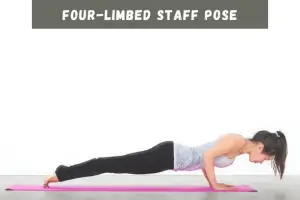
The problem with the four-limbed staff stance is that misalignment can develop over time due to repeatedly doing the pose inaccurately. If the alignment is not carefully considered, this pose, performed several times during each class in some practices, can cause significant stress and damage the shoulders.
How to do it safely
Your shoulder should be the same height as your elbows when you bend them at a 90-degree angle but not more than that. As you dive deeper into the stance, your shoulder blades should move closer to each other. Instead of pressing all your weight into your shoulders, push away from the ground.
What is the Riskiest Yet Effective Yoga Pose to Lose Weight?
-
Downward Facing Dog Pose
Adho Mukha Svanasana, or Downward Facing Dog and Child’s Pose, is one of the most common poses in yoga for weight loss. This basic posture lengthens the spine and tones abdominal muscles while strengthening the thighs, knees, and ankles.
The benefits of practicing pose include getting stronger, improving digestion, weight management, and reducing stress. The downward-facing dog position could be risky if you had surgeries on your knee, elbow, or hip.
Pros and Cons of Downward facing dog pose:
- The pose will help you relieve stiffness from your shoulder and back.
- The downward dog pose is known for improving muscle strength.
- You will gradually increase your physical energy if you do this pose every day.
- Beginners often experience severe pain in their shoulders, neck, and arms.
-
The Plank Pose
The plank pose is one of the best yoga poses for weight loss. It emphasizes strengthening the core and offers a full body stretch, which is ideal for easing back pain. The plank pose also helps you to breathe deeply and relax deeply. But the Plank pose can cause serious elbow and abdominal injuries if done incorrectly.
Pros and Cons of Plank pose:
- Plank pose can help you with your spine realignment.
- Doing this pose will help you stay focused.
- Plank pose can greatly improve your overall physical and mental health.
- Beginners will experience a lot of pain when putting their entire body’s weight on their elbows.
- Keeping your balance in this position can be very challenging.
What are the top most difficult yoga poses?

This pose can be very tricky to perform. The movements and positions are very complex, so if you make a mistake doing this pose, you might end up in the hospital.
The handstand scorpion yoga pose is one of the most challenging poses. You must have excellent balance, flexibility, and strength to perform it.
In addition to hip flexibility, balance, and strength, the Destroyer of the Universe posture also demands a very intense level of mental concentration. Newcomers should outright avoid this pose.
The Formidable face pose is only advised for experienced yoga practitioners because it needs exceptional flexibility, some power, and stability.
Even the most seasoned yoga practitioners frequently find the one-handed tree position challenging. It requires excellent balance, strength, and composition to perform accurately.
How to prevent yoga injuries?
Yoga injuries are very common, and when beginners experience these issues, the first thing they do is go on Google and search for how to avoid yoga injuries for beginners. Here we will show you some basic techniques to help prevent injuries while performing even the most complex poses.
It can be exhilarating to rush into different poses when you start your journey as a yogi. But that is a very common mistake because there are poses that you should avoid at first. Since you are a beginner, you should always start with the basic poses and slowly work your way up to the more challenging ones. You need to give your body some time to adjust to these poses.
Another thing you should do before doing any pose is warm up. It doesn’t matter if you are doing a basic or complex pose; you should always warm up and stretch your joints and muscles before performing a posture. A rookie mistake is to rush out of a pose, which can cause severe damage to your muscle or joints. You must always ease out of the pose, thus reducing the pressure on your joints.
Also Read: Yoga At Home: Best Ways to Start Yoga for Absolute Beginners


